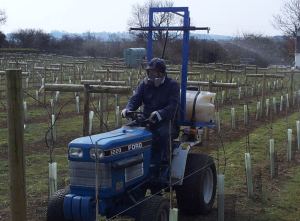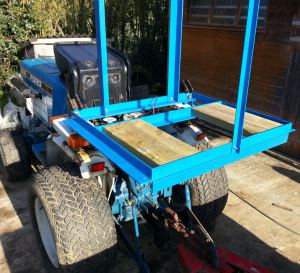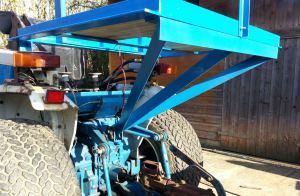Spraying is a difficult problem in a vineyard. The chemicals need to be applied at exactly the right dose and to cover as much of the vine and grapes as possible (without wasting chemicals by spraying other things such as the grass). This was relatively easy with only 400 vines, even if it did take most of a day using a backpack sprayer.
The back pack sprayer was not a practical option with nearly 2000 vines (to simply spray each side of the rows of vines involves walking nearly 5 KM, that does not include the numerous walks necessary to top up the pack back sprayer). So a small tractor was purchased –

Initially spraying was done by driving the tractor along with the spray tank perched behind the seat and the driver would use a hand held spray wand to apply the chemical to the vines. This was not satisfactory, apart from taking too long to spray the vineyard, it was very inconsistent in the rate of chemical applied.
With the help of a friend, a design was produced for a frame to fit onto the tractor. It attaches easily (two bolts and one pin) and carries the weight of a full chemical tank with ease. The frame carries four spray heads to ensure the vines are sprayed both above and below the leaf canopy. Both the electrical and the hose fittings are quick disconnect for ease of working and maintenance.


Today there is also a second spray tank that is only used for Glyphoshate weedkiller, which is applied with a hand wand (rather than through the spray heads) when and as needed.